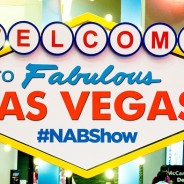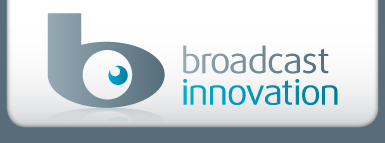#Not at NAB….2017

Last year when I returned from ‘Lost Wages’, following a 15-year unbroken run of sore feet and scarce fresh vegetables, I resolved that next year I deserved time off for good behaviour.
Many of last year’s dominant themes, especially IT scalability, seemed to benefit monolithic media markets such as North American or China and the IT industry. These themes seemed less relevant to many international broadcasters in Europe and Asia, operating in sophisticated media markets with much smaller audiences. Last year NAB felt more like another planet than ever. What might I see from a safe distance that I couldn’t see on the front line?
On the early train to Hilversum rainy Monday 24th April (day one of NAB 2017 in sunny Vegas) whilst passing the Amsterdam RAI (no really!) the bigger picture looked impressive. In the next few days, I covered surprising new ground. By zooming-out I could tune-out the growing noise caused by the generic IT industry which can certainly over-market the crap out of nothing at times. “Unprecedented”, “Big Data”, “Analytics”, “Gone to the cloud” blah. Listening from afar, the NAB conference sessions were informative, moderated by international media (thanks Broadcast Bridge, SVG Europe, Streaming Media) and Social Media (Linked In knows what I like).
Attacker or Defender?
Google fronted a conference panel session comprising Discovery, BAMTech, Viacom and ESPN who convened to examine “how media companies can bridge the gap from linear to digital TV”. The panel highlighted how infrastructure used to be the key technology asset for broadcasters. Yet by 2017 the wrong approach to infrastructure and it’s provisioning is critically holding many back. Evident that 2017’s broadcast and media technology mix remains complex. Next-generation media services are operated, architected and hosted in apparently endless permutations. The technology transition from linear broadcasting to today’s multi-outlet entertainment, only loosely based on the way we use to make “television”, defies easy description. Or easy standardisation.
However, the current turbulent disruption in global broadcast and media business greatly outweighs technology challenges and detours. So many possible media business models. One key barrier for commercial broadcasters is gaining a better direct relationship with their viewers and subscribers. So called “Big Data” is proposed to optimise programming (cost) and ad sales (revenue). Sharing and brokering big data is technically possible but there are many commercial hurdles. Adding further complexity Multichannel Video Program Distributors (MVP’s) and Service Providers often sit between broadcasters and their audiences.
On the revenue side, helpful clearer trends in ad-sales processes emerged. Some newly enhanced by automation, machine learning or even AI, others still requiring that special human touch. Firstly, TV ads can now be sold Programmatically based on daily allowances; “dayparts”. Secondly, Brands and Sponsors could continue to buy time transactionally based on their campaign based perception of premium programs and slots. What remains could be optimized by the usual buying within denser linear schedules, continuing to target specific demographics and segments, a talented ad-sales team can respond to, and create, changing conditions.
Who will thrive whilst audiences, subscribers and advertisers are on the move? Driven to “move” in fact. Insurgents can use so many new disruptive techniques. The skinny bundle, mucho OTT, cloud PVRs, smartphone ‘apps’ all give new impetus and opportunity. Can we see better by identifying who is attacking and who is defending? Is it easier for insurgents launching new services following trailblazers like Amazon and (ad-free) Netflix or WhatsApp and Facebook based on their one-to-one subscription? Can new entrants attack directly with their selective pure-play to win new revenue from cross media audiences? Borrowing from the Google Panel again “Disruptions suck if you’re not the disrupter” teased ESPN’s Vikram Somay.
What DID I miss?
A lot no doubt. And I do wish I had been at NAB 2017 to see “a giant leap for live streaming” as NASA astronauts Peggy Whitson and Jack Fisher reached-out to attendees in the first-ever 4K live stream from space. Not just to experience the technology but mostly for the pure moment. I would have cheered out loud with the rest of the crowd. Truly excited by the continuing possibilities of human broadcasting, even at that distance.
Face to face on the crossover between live TV, gaming and e-sports. And to learn more about the practicalities of VR and AI would have been on my hit list. Cloud based, (even cloud native) tools for media logistics, live streaming, production, graphics and post don’t require me to attend a trade show to analyse or integrate them. I now have temporary log-ins right here at my desktop.
A few days later as my train home pulled out of Hilversum a closing thought: NAB is still exciting. At times, very exciting. And whilst I experienced much of that remotely what I really miss is the human side. Associates and colleagues met by appointment and spontaneously. Whether we chat to buy or sell, tell stories or moan about Las Vegas, you do get out what you put in. There’s still a lot to be gained face-to-face.
I do recommend a year off. However, all being well, I will see you next year in Lost Wages. I’ll be back, via the Amsterdam RAI in September…Just hope everyone else hasn’t already “gone to the cloud”



